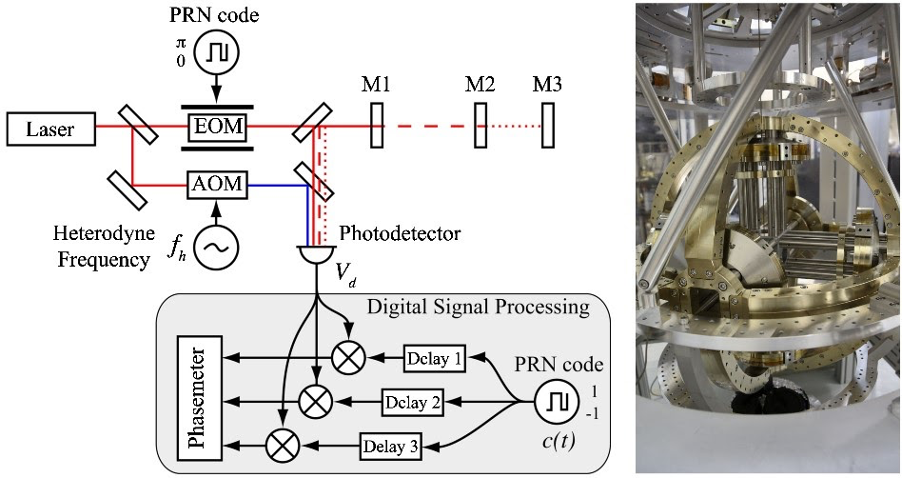Digitally enhanced Heterodyne Interferometery
Digitally enhanced Heterodyne Interferometery
Project status
Content navigation
About
Digitally enhanced heterodyne interferometry (DEHI) is an advanced optical measurement technique that can be used to discriminate multiple interferometric signals at a single photodetector with sub-wavelength sensitivity [1]. DEHI employs a digital pseudo-random noise (PRN) code phase-modulated onto the light source. This then allows various optical signals to be isolated based on their time-of-flight delay, using appropriate demodulation in digital signal processing. Further, this technique shows flexibility, scalability of number of signals, and computational efficiency through the use of field-programmable gate-arrays [2].
Given the sensitivity and advantages, DEHI is a promising technique to be used for simplifying local sensors/sensing for seismic attenuation systems. We have several projects focussed on demonstrating DEHI for local sensors in seismic attenuation systems, including implementations for the TorPeDO multi-stage attenuator system [3, 4], to applications in future gravitational-wave interferometric detector platforms.
 Left: Digitally enhanced heterodyne interferometer for monitoring the separation of mirrors M1, M2, and M3. Reflections from the different mirrors are isolated by matching the demodulation delays. EOM, electro-optic modulator; AOM, acousto-optic modulator [1]. Right: TorPeDO multi-stage attenuator system at CGA [4].
Left: Digitally enhanced heterodyne interferometer for monitoring the separation of mirrors M1, M2, and M3. Reflections from the different mirrors are isolated by matching the demodulation delays. EOM, electro-optic modulator; AOM, acousto-optic modulator [1]. Right: TorPeDO multi-stage attenuator system at CGA [4].
[1] D. A. Shaddock, Opt. Let, 32 (22) 2007. {https://www.osapublishing.org/ol/abstract.cfm?uri=ol-32-22-3355}
[2] Lyle Roberts PhD thesis {https://openresearch-repository.anu.edu.au/handle/1885/110523}
[3] David McManus PhD thesis {https://openresearch-repository.anu.edu.au/handle/1885/186119}
[4] TorPeDO Project {https://cga.anu.edu.au/research/projects/low-frequency-gravitational-force-sensing}
